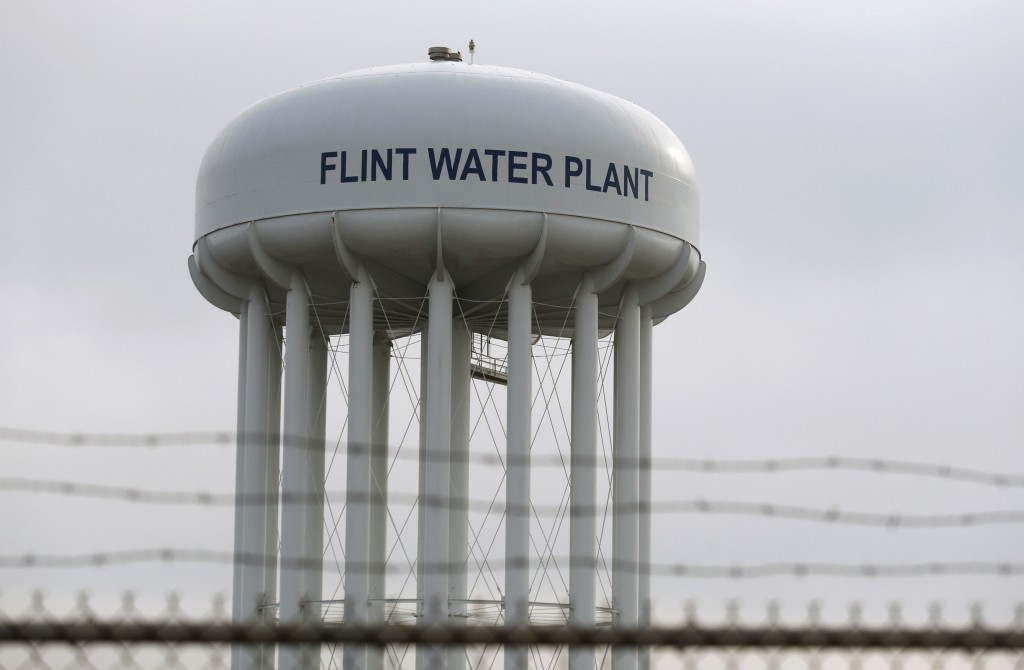Flint and The Wall: On the Inside, Looking Out

Photo by Rebecca Cook/Reuters.
All humans need clean water to survive.
However, in the United States, not all people have access to it.
Of the many things that concerned the average Trump voter in the 2016 election, the economy was at the forefront. Fear of socioeconomic instability and lost jobs, especially in regards to positions which apparently “could be taken by undocumented immigrants,” became a major focus of the former Republican candidate’s campaign. The phrase “build a wall” – referring to a wall along the United States and Mexican border – became one of his rallying cries.
The current president of the United States has made it clear that he intends to follow through with the creation of this border wall, though he has yet to outline a clear and comprehensive plan for its creation. Despite his lack of a plan and resources, economists have already estimated the cost of this structure to be within the range of $15 billion to $25 billion dollars (not including the $750 million dollar annual cost for maintenance).
Meanwhile, amidst this discussion of walls, immigrants, and the billions of imaginary dollars that Mexico will allegedly provide the United States for the construction of the border wall… the people of Flint, Michigan still do not have adequate water.
It has been more than 1,000 days since the residents of Flint have had a fully clean source of water. The issue with Flint’s water supply started only a little less than 10 years ago, and the lead contamination in the city’s drinking supply was reported in mid-2014. Improvements have been made in monitoring the city’s water quality, and a small number of the city’s corroded pipes have been replaced. Officials from the state of Michigan argue the water no longer exhibits lead levels that exceed the federal limit.
Progress has been slow and has taken a great deal of time and endless protest. For one, the Water Infrastructure Improvements for the Nation Act (WIIN) with $100 million dollars in grants designated to address Flint’s water crisis was approved in just September of last year under the Obama Administration. The tentative and hesitant acceptance of the crisis as a federal responsibility followed expressed Republican fears of a government shutdown and after Speaker of the House, Paul Ryan, argued that the problem in Flint was a “local” issue to be handled at this level of government.
However, Flint still has yet to see or receive this monetary aid given the current administration’s actions to restrict and censor the functioning of several federal agencies. Flint and their government representatives are still waiting for a clear response from the Trump Administration to confirm whether or not they will actually receive this much needed multimillion-dollar aid, despite the administration’s choice to freeze spending within the EPA, from where the funding for the legislation is coming.
While the current President of the United States continues to sign executive orders on a rolling basis in an attempt to “Make America Great Again,” Flint’s lead pipe infrastructure needs further repairs and replacement. Even now, the residents of Flint, Michigan are advised to only drink filtered water from outside of their locality. Adults, children, and even babies are still living with elevated levels of lead in their blood. Trust in not only the water systems, but the government, is at an all-time low in the area. And justifiably so.
In 2015, the residents of Flint filed a lawsuit against the EPA and the state of Michigan, stating that these groups “failed to follow several specific agency mandates and directives” regarding the steps to address this huge crisis. They requested $722 million dollars in total damages, claiming that this figure is based on the countless property and health issues that have affected the people of Flint.
On February 3rd of this year, a federal judge dismissed this class action lawsuit.
Since the current President took office, preoccupation with the creation of a wall along the border the United States and Mexico has far exceeded public interest in Flint and its residents. Concerns regarding a multi-billion dollar payment for the border wall are being discussed more than the much-needed aid for Flint. The idea of spending billions of dollars on a poorly thought-out project is getting more coverage than the health crisis facing thousands of individuals who do not have access to a clean source of water. The border wall is problematic for multiple reasons, but so is the emergency facing the citizens of Flint, Michigan who are being denied a basic human right.
Right now, the United States is in a very precarious position. The countless abnormal post-January 20th events and their resulting hashtags can make it easy to get swept up in the pandemonium of the now and in the latest social injustice. Though it is crucial to fight wrongs whenever they appear, it is also equally imperative not to forget those who needed, and still need, support and assistance.
All humans need water to survive.
However, right now, in the United States, not all people have a right to it.
Water is necessary to live, and to it, the people of Flint, Michigan do not have access. Their problems have been ignored for almost a decade. Their blood remains saturated with elevated levels of lead; due to prolonged exposure to the toxin, children aged five and below in particular are exhibiting neurological and behavioral problems, including memory loss and impaired motor function. Monetary aid and a full-scale show of support from government have yet to appear.
But, by all means:
Let’s build a wall.




